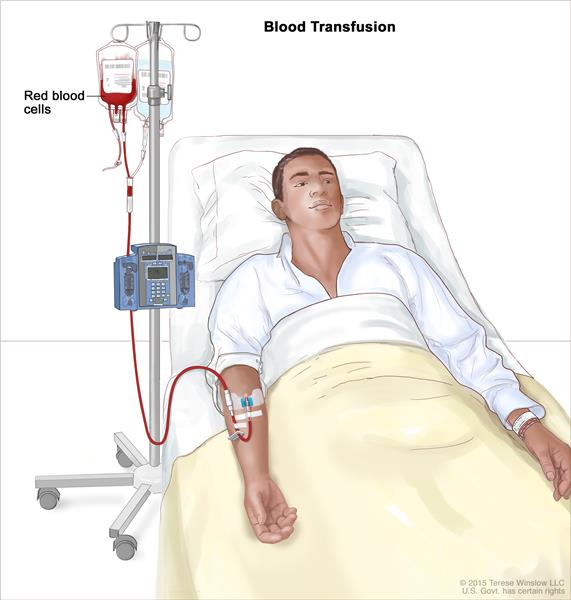Knowledge About Types of Fever is very important for everyone.A fever occurs when body temperature is increased.You Must Know which type of fever you have, and how you can be able to control the fever patient.
Continued fever
When the fever does not fluctuate more than about a degree and half (Fahrenheit) during twenty-four hours but at no time touches normal, it is known as continued fever. Example is of scarlet fever and pneumonia.
Intermittent fever (Swinging temperature)
When the temperature is only present for several mm. hours and touches normal for few hours, it is known as nr fever such as malarial
Remittent fever
When the daily fluctuation of temperature is more than two degrees Fahrenheit and never touches to normal, it is known remittent fever. Example is of pulmonary tuberculosis. In or fever the evening temperature is usually higher than morning one. But sometimes it can be vice versa
When intermittent fever occurs daily, it is known as Quotidian when it occurs alternate days ii is known as ‘Tertian’ and when it occurs at two days interval it is called ‘Quartan. These types occur in different types of Malaria.
Irregular fever
When there is a combination of two types of fever and no definite pattern is assessed it is known as Irregular Fever.
Crisis : When the fever ends rapidly or the body temperature falls suddenly and does not rise again, it is known as resolved by crisis.
True Crisis : When fever resolves by crisis and pulse and respiration fall to normal rate it is known as true crisis.
False Crisis : When temperature falls suddenly as crisis but pulse or respiration do not come to normal, it is known as False crises.
Lysis : When the fever comes down slowly it is known as ‘Lysis Enteric Fever.
Treatment of Patient Care For Nurses And Doctors.
Along with specific treatment by attending physician for a patient with fever, the nursing care of such patient is equally of great importance. Great relief and comfort can be provided to such patient only by nursing care. The details of steps of nursing care for a fever patient are as follows :
- Provision of comfortable bed and other linens.
- Rest on bed without disturbance by attendants and relatives.
- If mild to moderate fever, provide reading or listening aids.
- Proper privacy by bed screen and proper light as desired by the patient to avoid irritation.
- Apply cold sponging locally or on whole body or over head.
- Give fluid to reduce fever 1.5 litre to 3 litre or more fluid daily. This increases kidney excretion.
- For proper excretion of bowel, a fruit juice can be given to the fever patient. Alternately a laxative may be prescribed by
- The physician may prescribe an antipyretic when nursing procedure does not become effective.
- A liquid diet containing more of carbohydrate can be given to a fever patient for easy digestion.
- The room should have proper ventilation for heat loss and evaporation of sweats.
- Input And output chart should be maintained.
- TRP Should be taken 2 hourly or 4 hourly.
Creating a tabular guide to different types of fever can be informative and helpful. Here’s a simple table outlining various common types of fever, their possible causes, symptoms, and usual duration:
| Type of Fever | Possible Causes | Common Symptoms | Typical Duration |
|---|---|---|---|
| Viral Fever | Influenza, common cold, mononucleosis | Fatigue, body aches, cough | 3-7 days |
| Bacterial Fever | Urinary tract infections, pneumonia | Chills, sweating, headache | Varies with treatment |
| Fungal Fever | Histoplasmosis, cryptococcosis | Cough, chest pain, fatigue | Varies with treatment |
| Intermittent Fever | Malaria, septicemia | Fever spikes at regular intervals, chills | Varies with treatment |
| Remittent Fever | Tuberculosis, infective endocarditis | Fever fluctuates but never normalizes | Varies with treatment |
| Continuous Fever | Typhoid, brucellosis | Persistent high fever | 1-2 weeks |
| Low-Grade Fever | Chronic conditions like HIV, hepatitis | Mild but persistent fever | Can be prolonged |
This table is a general guide and is not exhaustive. The actual duration and severity of symptoms can vary based on individual health conditions and the effectiveness of treatment. It’s always advisable to consult a healthcare professional for accurate diagnosis and treatment.
Conclusion
Fever is a common symptom that can vary in type and severity. Understanding the different types of fever, their causes, and potential treatments can empower individuals to seek appropriate medical care and manage their symptoms effectively. If you or someone you know is experiencing fever symptoms, it is important to consult a healthcare professional for proper evaluation and guidance. Remember to take prompt action, prioritize rest and hydration, and follow the recommended course of treatment for a speedy recovery.
